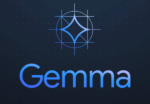Google’s planned acquisition of Motorola Mobility for about US$12.5 billion doesn’t change things for developers right away, but could have implications in the future, according to Carolina Milanesi, research vice president of consumer devices at Gartner.
The fragmentation issue – different development standards for different mobile devices using the Android operating system – should be one of the developer pain points eased with this acquisition, according to Milanesi, although she added it will not solve the problem all together.
“Motorola devices will set the bar for competitors in the Android space, but Google will still need to work with Samsung and HTC in Europe,” Milanesi said, adding that Motorola doesn’t have as large a presence globally as it does in the United States.
“Stock Android will always have the latest and greatest updates first,” Michael Gartenberg, research director of consumer technologies at Gartner, said, adding that after the acquisition, Motorola devices will likely be running the basic operating system without proprietary add-ons. This means that should HTC or Samsung or any other device manufacturer decide to put a layer over Google’s Android, they will have to worry about whether or not developers decide to support their version.
Tony Hillerson, software engineer at Effective UI, which develops applications for iOS and Android, predicts that the acquisition is really more immediately exciting for consumers.
“We know that the iPhone user experience benefits greatly from Apple’s control of the hardware chain, and now Google is one step closer to that. That means [Google doesn’t] have to rely on handset makers as much to have their Android vision become real. [Google] can have a flagship line of devices that show everyone exactly how it means for the Android experience to be without other manufacturers wanting to taint the experience just to differentiate their handset from other manufacturer’s handsets,” Hillerson explained in an email.
Developers, Hillerson said, will have more control over the Android experience as well, without the additional steps they take today to maintain a seamless experience over a variety of devices.
“Where it affects developers is that once Google can get more control over the Android experience, without any middlemen tweaking things on one line of devices at least, then it may become more likely that there are less differences in the experience within the same class of devices from one device to the next. These are differences that may affect how the developer’s app looks, feels, or works, and is part of the problem of fragmentation,” Hillerson explained in an email.
Wallace McClure, owner of Scalable Development, another app developer, also feels the fragmentation problem.
“Motorola updates [the software on its] devices fairly quickly, which could help developers and end-users know what to expect,” McClure said, adding that this characteristic will probably carry over to Google Motorola devices and will help developers determine how to tailor their updates so as to coincide with an operating system release update, so that developers can support both the newest version of the operating system and hardware with every iteration of their application.
The more people that use applications on a standard version, the better the experience McClure said, as this allows developers to test for specific hardware and OS specifications, which if standardized, will help developers get a better grasp of the experience from the initial development phase. As it stands, McClure said he feels that Google’s pushing of the updated OS versions is often patchy and can sometimes take up to six months to reach some devices, something, which leaves developers and consumers unhappy.
Google’s version of how applications should be created is something it tries to implement through the Android Developer guidelines on its website. Now, according to Gartenberg they will be able to push their version of hardware standards for devices running Android as well, across the digital landscape.
“With Motorola Mobility, Google now has access to partnerships with cable and satellite providers [to advance Google TV]. Google can pursue their vision of the digital home,” Gartenberg said, adding that Google can now use hardware to push access to its Web-based services, instead of simply providing an operating system, giving developers an additional eco-system to work with.
As far as devices are concerned, Gartenberg said that the industry has already seen results of Google’s partnership with Motorola. “The Xoom is a purely Android device. It’s a native Google experience, there’s no Motorola software on it,” Gartenberg said, adding that Motorola’s smartphone “skin” on top of the Android operating system will probably go away as more devices are released out of this acquisition.





